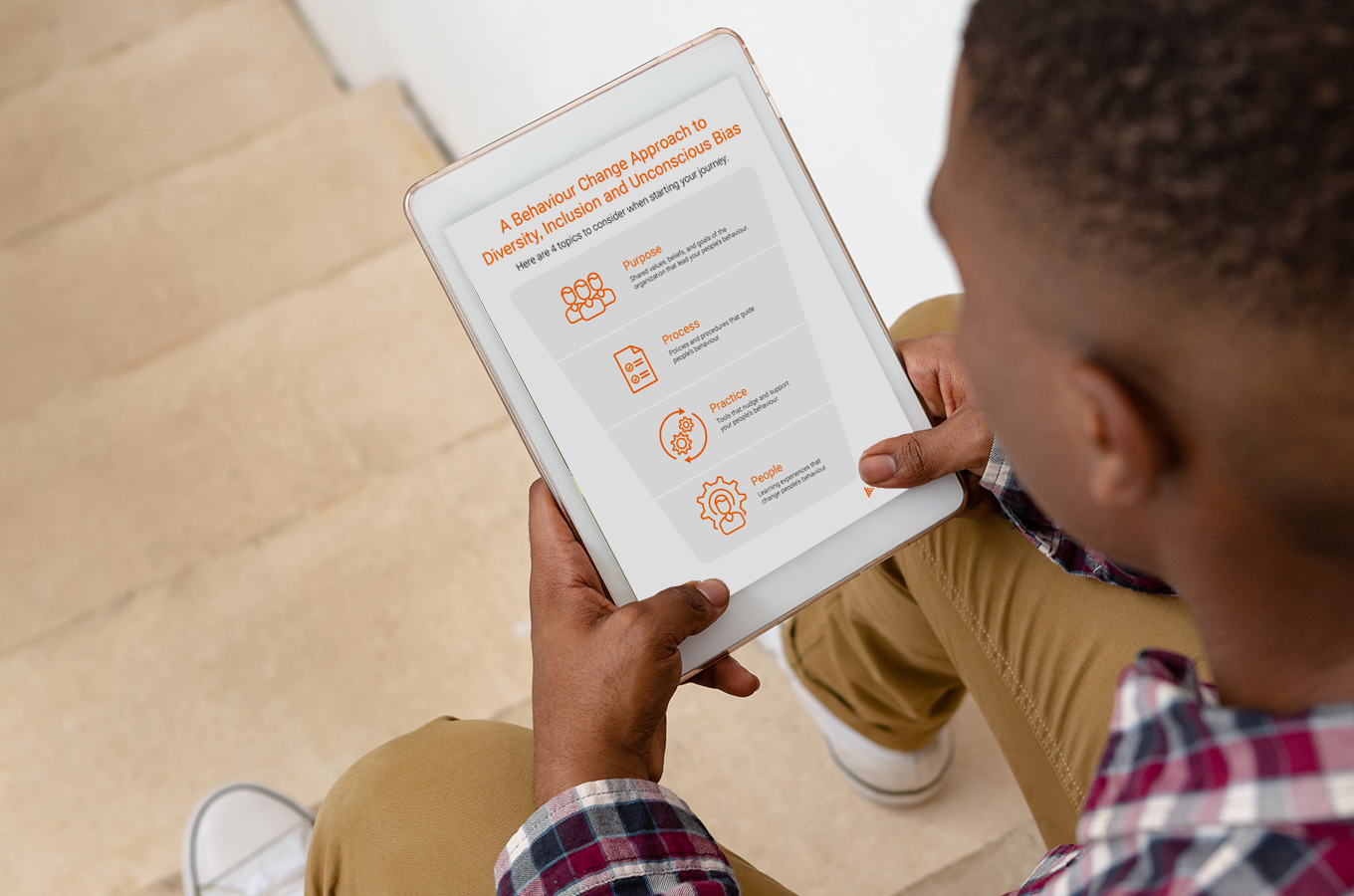
Can We Avoid Burnout?
We often use the term “burnout” as a vague label for an exhausting day or week of hard work, but actual burnout is more than

A ‘yes’ to questions like these signals the presence of unconscious bias, circumventing your best efforts to promote diversity and inclusion. As an HR professional, you know it’s your job to work to eliminate biases in order to avoid the pitfalls that even the biggest organizations – including Starbucks and Amazon – have fallen into. Companies everywhere are scrambling for ways to deal with unconscious bias. And you can’t count on artificial intelligence to save you – it can be just as guilty as the rest of us.
Your first instinct when dealing with unconscious bias may be to set up more training. While training is important, I recommend you take a step back and consider the problem from a broader strategic level to identify multiple behaviour-changing levers that can work in tandem to make your workplace more diverse, more inclusive and less biased.
Before we get into the details, let’s start with clear definitions of unconscious bias and unconscious bias training.
Unconscious bias refers to learned, deeply ingrained stereotypes, views and opinions that we are unaware of because they happen outside our conscious control. They surface automatically – triggered by our brain as it makes quick judgements about people and situations. Unconscious biases are influenced by factors such as our background, cultural environment, context and personal experiences and they affect our everyday behaviour and decision-making.
Unconscious bias training and interventions aim to increase awareness of unconscious bias and its impact on people who belong to traditionally underrepresented groups in terms of characteristics such as age, race, sex, disability, religion or belief, sexual orientation, gender, marriage and civil partnership status, and other attributes.
Some of the aims of unconscious bias training are:
For more on unconscious bias training, please see the U.K.-based Equality and Human Rights Commission’s report, Unconscious bias training: An assessment of the evidence for effectiveness (March 2018).
Training, while important, is only a single tactic to raise awareness about unconscious bias and promote positive diversity and inclusion outcomes. The challenge is that most people will say they are unbiased – in fact, individuals who take Harvard’s IAT test are most likely to self-report as egalitarian. However, deeper probing continues to reveal systematic biases:
Unlike self-awareness and beliefs, behaviour is observable. We can measure it scientifically. We can track changes and make adjustments in our programming to make sure it is making a real difference. If measurable changes in behaviour are your goal (moving beyond what people say or believe to what they do), you require a strategic approach or framework that involves both teams and individuals and is embedded at multiple levels throughout the organization.
A strategic framework for diversity and inclusion looks like this:

Here’s how this strategic framework plays out in terms of real activities with tangible outcomes:
The shared values, beliefs, and purpose that lead people’s behaviour
Yes, it’s important to state that your organization values diversity and inclusion. But we all know that talk is cheap. Efforts that only extend to “core values” statements on your website may be worse than not doing anything at all. It’s essential to walk your talk by integrating your stated values into activities within the other three organizational levels (process, practice and people). Doing so will set you well on your way to creating a culture that honours and supports diversity and inclusion.
Policies and procedures that guide people’s behaviour
Turning policies on diversity and inclusion into concrete workplace procedures that people can easily follow is critical to creating the ‘ways of working’ that you want to engender throughout your workforce. Hiring is a high priority place to start, including recruitment strategies, resume review and interviewing techniques.
Tools that nudge and support your people’s behaviour
It’s entirely possible to change people’s behaviour without expensive, productivity-zapping education and training. One way is by augmenting people’s environments – whether physical, cognitive, or social – with tools or “behavioural nudges.”
From a simple checklist all the way to a fully integrated performance support like Turbotax (accounting software that takes individuals through a step-by-step process of answering simple questions to file their tax returns), these tools effectively take the thinking out of an activity, and influence the way people perform the activity through subtle, often unconscious cues. (This point is critical, since it is people’s thinking that is precisely the problem when it comes to diversity, inclusion and unconscious bias.)
For example, framing interview questions in certain ways on your standard interview script can disavow interviewers of particular biases that may differentially support certain candidates. The interview script is an example of a tool that deploys nudges by framing questions to drive egalitarian questioning and responses.
Note that it’s not necessary to change the thinking of interviewers; we need only have them follow a particular script that is nuanced in the right sorts of ways.
For many organizations, these “behavioural nudges” are an untapped method of creating behaviour change. They are easy to implement and tremendously cost-effective.
Learning experiences that change people’s behaviour
Of course, we can also change observable behaviour by developing each individual’s personal knowledge and skills. To do it right, however, you need to design training in a way that goes beyond changing their minds to improve behaviour-based skills.
I’m a big fan of in-person training that uses scenarios and simulations to facilitate practicing skills and applying knowledge.
I like to flip the traditional way of teaching and begin by challenging people to solve an applied problem, while providing them with coaching and feedback along the way. Any information they need – any knowledge – can be provided as optional resources they can use to solve the problem.
Another avenue to consider is e-learning, which provides a scalable solution to unconscious bias and diversity and inclusion training if you have a large employee base and are looking for cost efficiencies. The research shows that for unconscious bias training, e-learning can provide the same outcomes as in-person training. (For more on this point, see section 3.2 in the Equality and Human Rights Commission’s report, Unconscious bias training: An assessment of the evidence for effectiveness).
A blend of in-person training for leaders and e-learning for employees is a good mix if you have a big company. The leaders get the hands-on experience: they wrestle with the ideas and can help shape the implementation in the organization, while employees get a scalable e-learning version, with no loss in learning outcomes.
A strategy integrated across these four organizational elements – purpose, process, practice and people – is your best path to real, measurable behaviour change and a more diverse and inclusive workplace.
— Aaron Barth
Aaron Barth, Ph.D., is president and founder of Dialectic. He is a frequent speaker on topics such as unconscious bias in the workplace, and the power of science, design thinking, and technology to help accelerate employee learning, transform organizations and support employee and customer engagement.

We often use the term “burnout” as a vague label for an exhausting day or week of hard work, but actual burnout is more than

At Dialectic, we think a lot about DEI, soft skills, and leadership training that makes organizations more inclusive and human-friendly. When we team up with

Ageism commonly affects women over 40 in the workplace. In spite of their tremendous wisdom and experience, women over 40 may be passed over for
Dialectic helps organizations improve the way people work, learn, and collaborate through person-centred design and the latest in social science.

Does your team struggle with soft skills?
Use our app or upload Snippets to your LMS to build better habits in minutes with scenario-based microlearning.
Sign up for our weekly roundup of the latest on DEI, leadership, collaboration, and learning science.
© 2024 Dialectic. All rights reserved. | Contact Us | Privacy Policy | Terms of Use | AODA Statement
See how easy it is to activate soft skills in your organization. Soft skills training on 3 key topics: DEI, Leadership, and Collaboration.